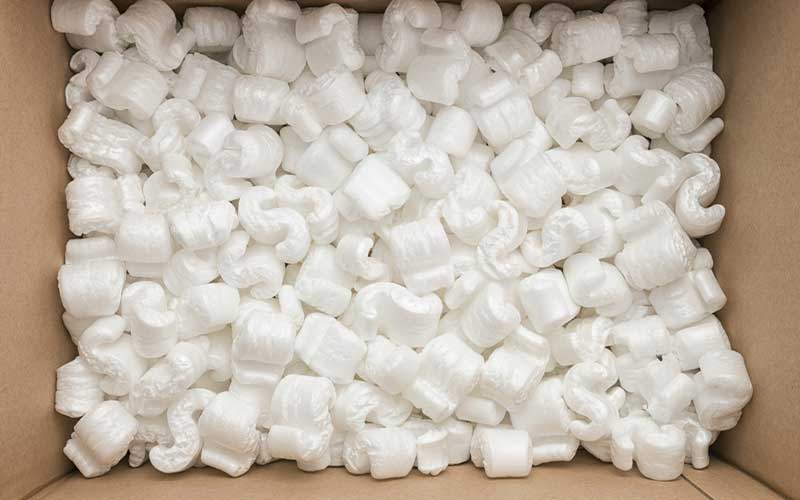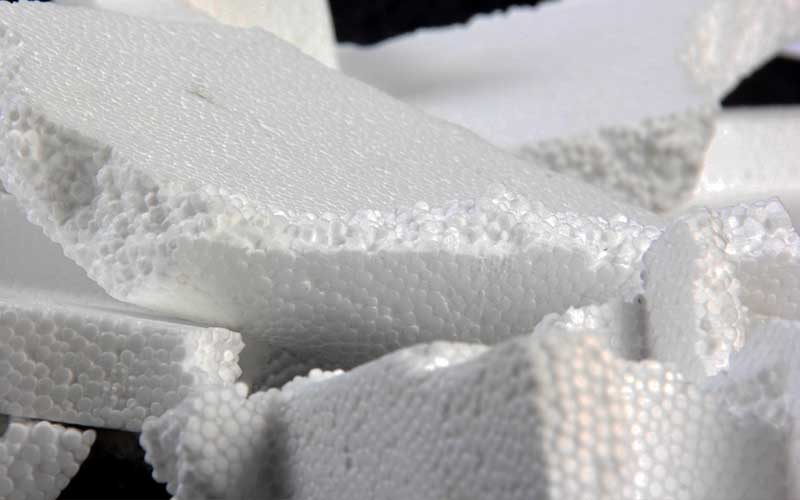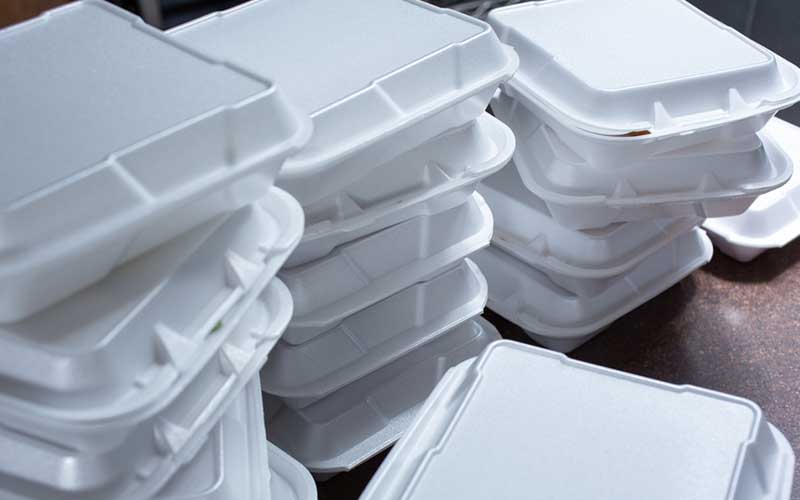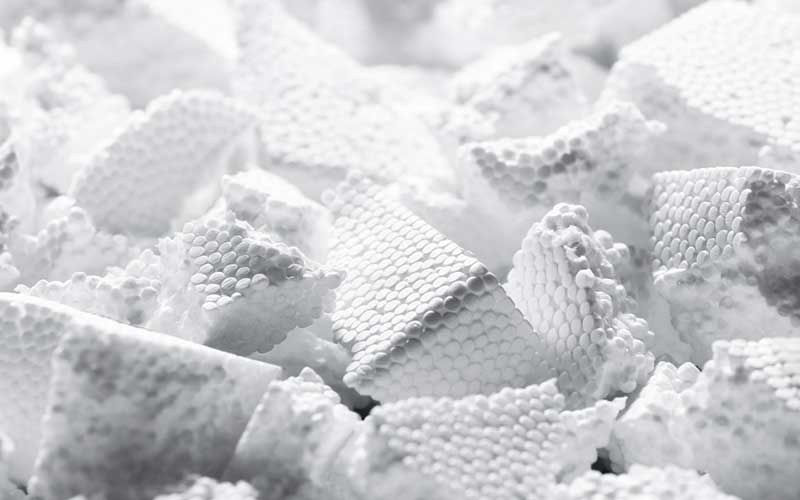Have you ever asked yourself, “what does gas do to Styrofoam”? Do you want to know what happens when you mix acetone and Styrofoam? Are you bothered about the effects of gas on Styrofoam?
Bother no more. You have made the right choice by picking this article.
Gas breaks down the molecules of the Styrofoam and makes it crumble and brittle. Mixing Styrofoam and gas is a famous recipe for an explosive commodity- Napalm. Many people know how it is made, but many misconceptions exist about what gasoline does to Styrofoam.
In this article, you learn about Styrofoam, what gas does to it, how to reduce Styrofoam waste, how to dispose of it well, et cetera
Let’s find out.
What Does Gas Do to Styrofoam?
Gasoline dissolves styrofoam.
Gasoline has a huge impact on styrofoam. Once gasoline touches styrofoam, it will make the material to swell up and become brittle. Then, later on break up the styrofoam over time into a thick sticky substance with high flammability.
Styrofoam’s biggest threat is gas. When the gas comes in contact with Styrofoam, the molecules start breaking down; this makes the Styrofoam crumble and become brittle. When you add the correct ratio, your mixture turns sticky, and it becomes hazardous.
Also Read: Can You Pump Gas With the Car On? (Explained)
What Is Styrofoam?

It is a plastic that is produced from polystyrene. Polystyrene product is petroleum based. So many applications use it; it can be used on insulation or food containers. So much Styrofoam made yearly is used for insulation and packaging; the ones recycled are less than 1%.
Is Styrofoam Dangerous?
Styrofoam is a famous material used for cups, food, and containers. It is inexpensive, lightweight, and airtight. However, there are concerns that chemicals used during the styrofoam manufacturing process can be harmful in some ways.
Ability to Release Gas
As the Styrofoam is heated, it releases the styrene gas. Studies have proven that when one is exposed to styrene, health issues like skin irritation, headaches, and fatigue can result.
Environmental Impact
Styrofoam production needs petroleum-based commodities, which adds to the frequent air pollution. Also, failure to recycle Styrofoam occupies landfill space, and harmful chemicals are leached into our environment. This is a negative impact.
Can Cause Health Problems
Studies have proven that when one is exposed to styrene, health issues like skin irritation, headaches, and fatigue can result.
The Effects of Gas on Styrofoam
When the gas comes in contact with Styrofoam, the molecules start breaking down; this makes the Styrofoam crumble and become brittle. The reason is that polystyrene molecules found in Styrofoam are broken down by gas, and this causes a reduction in durability and strength.
Tips for Reducing Styrofoam Waste

To cause a reduction in the quantity of waste from Styrofoam made each year, here are some tips:
- At any possible time, make use of biodegradable packaging materials.
- When possible, recycle Styrofoam
- Do not use styrofoam insulation in your office or home
- Rather than using styrofoam packaging, use reusable containers.
Styrofoam has a harmful impact on our environment; make sure to take proper steps to add to the reduction of the extent of waste that is being produced every year.
By using biodegradable materials and recycling Styrofoam and reusable containers, you are helping protect our environment and land.
Will Gasoline Dissolve Styrofoam?
Of course. The gelatinous and sticky material is homemade and called “napalm.” Usually, it is produced by dissolving Styrofoam pieces in diesel fuel or gasoline for the formation of a substance that is jelly-like and flammable.
The napalm military-grade was initially produced using palmitic acid, thickening agents, and naphthenic acid; thus, the name. Its modern version is napalm-B which is thickened by using styrene derivatives.
Some versions add an igniting agent, like trimethylaluminum. Volatile fluids like gasoline are used by mixtures that burn faster, whereas a combination of motor oil & gas or fuel oil is used by forms that burn slower.
How Do You Melt Styrofoam?
We have numerous ways you can take to achieve this; they are:
Using Acetone
A nail polish remover has acetone solvent. It can be used for melting Styrofoam because it can cause polystyrene molecules to break down. When you apply acetone to Styrofoam, watch as it dissolves that foam and then becomes liquid.
Even so, acetone is flammable and can cause harm. Therefore, you are advised to follow safety measures while using the acetone method, like wearing goggles and gloves and working in an adequately ventilated area.
Using a Nail Polish Remover
You can soak Styrofoam in your nail polish remover using acetone; allow it for 15 minutes. Ensure that you rinse it afterward, then let it dry. It may require doing the process several times to remove any styrofoam.
Using Gasoline
Exposure of Styrofoam to gasoline makes the plastic finally dissolve. After that, Styrofoam will not have the ability to retain its shape; then, it will break down.
When your Styrofoam has had exposure to gasoline, take it away immediately. It can cause a negative impact on the environment or lead to fire hazards.
Using Vinegar
To remove gas buildup in your Styrofoam, vinegar can do the trick. Get the container and pour white vinegar halfway full. Swirl it around, then allow it to sit for like one hour.
After one hour, remove the vinegar, then rinse your container using warm water. Also, other containers with gas buildup can be cleaned using this method.
How Do You Properly Dispose Styrofoam?

First, know that it is a kind of plastic that is produced from polystyrene. Polystyrene product is petroleum-based; produced from oil. We use Styrofoam in making food containers, plates, and cups and as insulation.
When the gas comes in contact with Styrofoam, the molecules start breaking down; this makes the Styrofoam crumble and become brittle. This happens with time, and it can take so many years for Styrofoam to break down completely.
Here are ways for the proper disposal of Styrofoam, they are:
Break It Down
Styrofoam is lightweight and can absorb shock and prevent harm to goods in transit. It also shows that pieces from the material are usually large enough to fit into the bin; you must break them down. However, when it has been used to package great products, you may need to be more significant to fit comfortably in a car’s trunk.
Carefully break down Styrofoam, ensuring that the material does not blow away. Tiny pellets for the material can break off easily. As a result, they can go into oceans, seas, drains, rivers, etc. Styrofoam and Single-use plastics are the primary pollutants on the coastline and water.
Throw It Away
When one has a tiny quantity of Styrofoam, they usually dispose of it in their waste bin. Usually, it is not practical to drive yourself to the recycling center. The harm of driving yourself to a recycling center and driving back can cause the same damage to our environment as throwing plastic into the bin.
Having said that, when Styrofoam gets to a landfill, you realize it is large but light. Thus, it occupies space and takes so many years before it breaks down; most times, the tiny pellets blow away, then into our waterways. Therefore, decide to gather a big bag containing styrofoam containers and other things before going to the recycling center in your locality.
Find a Recycling Center
Earth 911 recycling center locator can be used for locating a recycling center in your area. Different centers also take various forms of polystyrene that are expanded.
Many companies and delivery centers adopt Styrofoam chips used for packaging because these items can be reused without recourse to do anything to the said material. Although, take-away containers and to-go cups are different due to their contaminants.
Burn It
By burning Styrofoam, you are releasing harmful chemicals which go into the air. Therefore, you are advised to burn Styrofoam only in safe spaces and follow precautions.
Compost It
To achieve this, you must divide your Styrofoam into tiny pieces and mix them with the compost pile. Styrofoam takes a long period to break down entirely but eventually decomposes.
If you are getting rid of Styrofoam, try to recycle a lot. You can decide to compost or burn the foam, ensuring that you follow precautions. The most efficient way of disposing of Styrofoam is by recycling because it has proven easy and safe. It is equally suitable for our environment.
Alternatives
Alternative materials can be used to reduce the quantity of Styrofoam that you use. For instance, rather than using foam to package, make use of paper or cardboard; this will make a positive change.
Also Read: Can You Mix E85 With Regular Gas?
Frequently Asked Questions – What Does Gas Do to Styrofoam?
Is napalm made from Styrofoam?
Napalm is a combination of flammable petroleum and thickened with peculiar soaps. This is a combination of packing peanuts or styrofoam insulation and gasoline. Napalm(a sticky substance) is the result of the combination.
Does motor oil dissolve Styrofoam?
Yes. Understand that nail polish remover (nonpolar) removes the nail polish (nonpolar) from one’s nails. Or oil (nonpolar) separates itself from water(polar). Also, salt (polar) still dissolves in our water. This is why the nonpolar compounds, oil, and Styrofoam, function similarly. Oil can dissolve Styrofoam.
Why does Styrofoam dissolve in gas?
The trade name used for polystyrene (PS) foams is Styrofoam. PS dissolves in organic substances like hexene, heavier hydrocarbons, benzine, THF, MEK, and acetone. A mix of hydrocarbons is gasoline, which dissolves PS, forming the viscose paste. Styrofoam can dissolve in gas.
What happens when you mix acetone and Styrofoam?
This is not a chemical reaction, but rather, it is physical. First, the air in the foam goes off; then, because Styrofoam contains mostly air, its structure is completely lost as it dissolves in the acetone. Next, the lengthy chain of molecules is split by acetone; then air leaves, reducing the volume radically.
Is making napalm illegal?
International law states that it is illegal to use napalm against civilians. However, in wartime, it is okay to use it against enemy troops. It is an old military tradition to set an enemy on fire. Napalm history dates back to Greek fire, a sort of napalm—ancient history.
Does napalm burn underwater?
Napalm is jelly or thick oil combined with fuel (gasoline or petrol). Napalm B versions that have white phosphorus can burn underwater (if oxygen is trapped in the folds of the cloth, et cetera.) So if you are being attacked by this weapon, jumping into lakes and rivers will not save you
What will dissolve Styrofoam?
Acetone. Pour a little acetone into a bowl, and put styrofoam beads, foam chunks, packing peanuts, or styrofoam cups into the bowl. Just as hot water dissolves sugar, same way acetone dissolves Styrofoam.
Does Diesel eat through Styrofoam?
Some additives to fuel will eat through the styrofoam cup, whereas legal diesel fuel will not eat through the styrofoam cup.
How do you dissolve Styrofoam?
Use acetone. Pour a little acetone into a bowl, then collect styrofoam beads, chunks of Styrofoam, cups, and packing peanuts and put them in the bowl of acetone. Like hot water dissolves sugar, the acetone will dissolve the Styrofoam.
Does water dissolve Styrofoam?
It causes a reduction in trapped gases, then reduces styrofoam volume. However, polystyrene molecules are intact; they settle at the glass bottom and form a mushy puddle. Water is known as a type of polar solvent, so it cannot dissolve Styrofoam.
Why does Styrofoam dissolve in gasoline?
Know that plastic can dissolve in almost every organic solvent. It is not only acetone. You find acetone in most nail polish removers. When you are unable to find acetone, use gasoline to dissolve Styrofoam. This project is done best outdoors because gasoline, acetone, and various organic solvents are usually very toxic.

